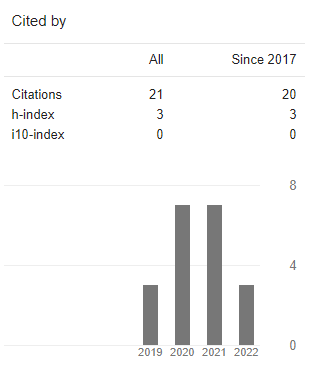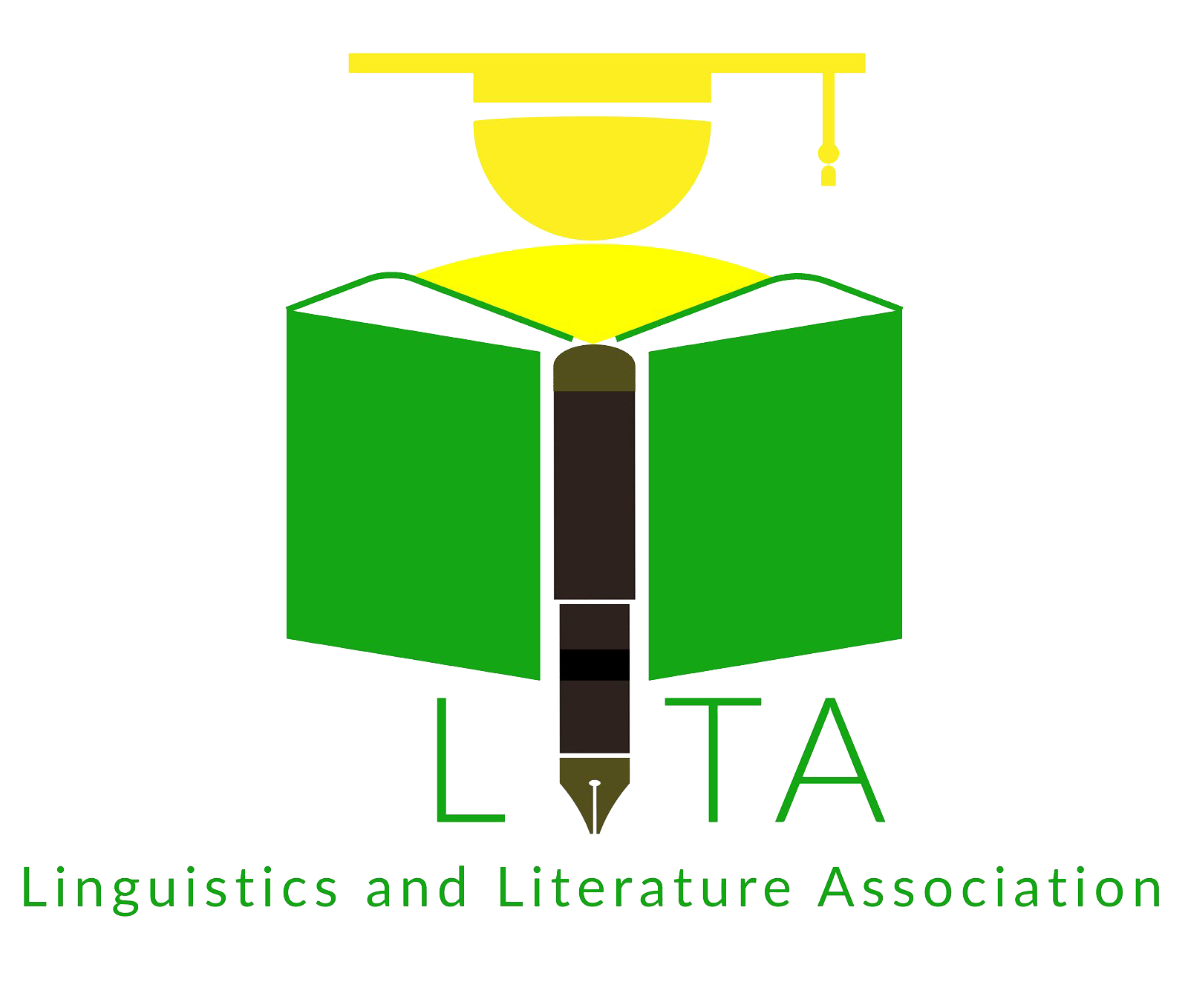Insta-Health: The Multimodal-Social Semiotic Analysis of WHO’s COVID-19 Promotion Campaign Posters
Keywords:
campaign posters, multimodal-social semiotic, world health organization, COVID-19Abstract
The study aimed to provide an in-depth understanding of the messages conveyed by the posters related to COVID-19. Employing descriptive qualitative method, the study analyzed the verbal and visual elements of health promotion posters posted by the World Health Organization’s (WHO) official Instagram, using Halliday’s social semiotic metafunction and Kress and van Leeuwen’s multimodality. The study found that the multimodal posters effectively conveyed messages related to instructions, information, and prohibitions. However, an imbalance in the application of various modes within the posters was identified, posing the potential for misunderstanding and confusion among viewers. Nevertheless, the study offers several suggestions on creating health promotion posters that are both persuasive and informative. The findings contribute to the development of health campaign poster materials that capture attention, convey messages effectively, and align with expectations outlined in health campaign targets, while simultaneously ensuring comprehensive communication. The study provides evaluative results that can inform effective communication strategies for promoting public health during the ongoing COVID-19 pandemic.References
Aning, E. (2021). An analysis of Covid-19 poster of the Ghana health service: A semiotic approach. European Journal of English Language and Literature Studies, 9(6), 56–68. https://papers.ssrn.com/abstract=3931265
Aragbuwa, A., & Adejumo, V. O. (2021). Covid-19 #Takeresponsibility: A multimodal discourse analysis of select NCDC’s online public health advertising campaign. Journal of Language and Literature, 21(2), 267–280. https://doi.org/10.24071/JOLL.V21I2.3044
Asseel, D. A. (2020). Seeing the unseen: Euphemism in animated films a multimodal and critical discourse study. Lancaster University.
Bedi, N. K. (2019). Analysing the poster of the reader: A multimodal perspective. Language in India, 19(3), 159–167.
Chen, Y. (2010). Exploring dialogic engagement with readers in multimodal EFL textbooks in China. Http://Dx.Doi.Org/10.1177/1470357210382186, 9(4), 485–506. https://doi.org/10.1177/1470357210382186
Gheisari, M., & Akbari, O. (2022). A comparison of cultural representation and ideologies in the multimodal discourses of textbooks used in public and private Iranian contexts: a cross-textual study. Https://Doi.Org/10.1080/10350330.2022.2094234. https://doi.org/10.1080/10350330.2022.2094234
Gill, K. A., & Lennon, H. (2022). Conformity through fear: A multimodal critical discourse analysis of covid-19 information adverts. CADAAD Journal, 14(1), 22–44.
Girard, S., & Price, M. A. (2012). Sales dan marketing-Menjadi marketer andal dan profesional. Metagraf.
Halliday, M. A. K. (1994). An introduction to functional grammar. In Theoretical Economics Letters (Issue 04). Edward Arnold. https://doi.org/10.4236/TEL.2016.64070
Haratyan, F. (2011). Halliday’s SFL and social meaning. 2nd International Conference on Humanities, Historical and Social Sciences, 260–264. http://www.ipedr.com/vol17/49-CHHSS 2011-H10074.pdf
Hidarto, A., & Andrieza, A. (2022). Gender differences in influencer advertisements on instagram: A multimodal perspective. Journal of Language and Literature, 22(1), 220–237. https://doi.org/10.24071/JOLL.V22I1.4095
Hu, C., & Luo, M. (2016). A social semiotic analysis of Air France’s print advertisements. International Journal of English Linguistics, 6(4), 30–40. https://doi.org/10.5539/ijel.v6n4p30
Ijam, D. M. M., & Abbaas, D. F. (2019). A semiotic study of English commercial advertisements a pragma-stylistic study view project verbless clauses view project. International Journal of Innovation, Creativity and Change, 8(10), 35–54.
Jiménez GarcÃa, S. J. (2020). Análisis multimodal de pósteres de Harry Potter [Universidad de Cádiz]. http://hdl.handle.net/10498/23275
Jusslin, S., Magnusson, U., Rejman, K., Heilä-Ylikallio, R., & Björklund, S. (2020). Meaning-making in fifth-graders’ multimodal texts. Apples - Journal of Applied Language Studies, 14(2). https://doi.org/10.47862/APPLES.99133
Kadim, E. N., & Abbas, A. H. (2022). Signs are sometimes more humane than some people: A semiotic-discourse analysis of selected COVID-19 cartoons and posters. Journal of Global Scientific Research, 7(9), 2022–2633. https://doi.org/10.5281/jgsr.2022.7083283
Khusna, W. L., Malik, N. J., & Hardjatno, T. (2022). The ideational meaning of Covid-19 health promotion posters: Multimodal discourse. Diksi, 30(1), 57–65. https://doi.org/10.21831/DIKSI.V30I1.47248
Kress, G. (2010). Multimodality: A social semiotic approach to contemporary communication. Routledge.
Kress, G., & Van Leuween, T. (2021). Reading images: The grammar of visual design (3rd ed.). Routledge. https://www.routledge.com/Reading-Images-The-Grammar-of-Visual-Design/Kress-Leeuwen/p/book/9780415672573
Lavoie, K. A. (2015). Instagram and branding: A case study of Dunkin’ Donuts. ELON Journal of Undergraduate Research in Communications, 6(2). https://doi.org/10.1146/ANNUREV.POLISCI.10.072805.103054
Machin, D., & Mayr, A. (2012). How to do critical discourse analysis: A multimodal introduction. SAGE.
Nugraha, I. S., & Haq, A. S. (2021). Social stigma of COVID-19: A semiotic analysis of WHO campaign posters. Soshum: Jurnal Sosial Dan Humaniora, 11(2), 155–168. https://doi.org/10.31940/SOSHUM.V11I2.2489
O’Halloran, K. L. (2008). Systemic functional-multimodal discourse analysis (SF-MDA): constructing ideational meaning using language and visual imagery. Visual Communication, 7(4), 443–475. https://doi.org/10.1177/1470357208096210
Sulatra, I. K., & Pratiwi, D. P. E. (2020). The ideology within Covid-19 public service advertisements: A semiotic approach. Humanis, 24(4). https://ojs.unud.ac.id/index.php/sastra/article/view/62204/37228
Susetya, K. D. A., & Nurhayati, I. K. (2020). Multimodal analysis of photos in @Sandiuno Instagram account before and after the 2019 presidential election. Nyimak: Journal of Communication, 4(2), 157–168. https://doi.org/10.31000/NYIMAK.V4I2.2341
Utomo, S. R. H., & Maharani, S. A. (2021). Analisis multimodalitas hegemoik maskulinitas dalam komik digital tentang larangan mudik pada feed instagram akun @Jokowi. Prosiding SNADES 2021 - Kebangkitan Desain & New Media: Membangun Indonesia Di Era Pandemi, 78–91.
Utoyo, A. W. (2020). Analisis komunikasi visual pada poster sebagai media komunikasi mendorong jarak sosial di Jakarta saat epidemi Covid 19. LUGAS Jurnal Komunikasi, 4(1), 35–42. https://doi.org/10.31334/LUGAS.V4I1.939
Xiong, T., & Hu, G. (2022). Designing values in English as a foreign language textbooks: A social semiotic approach. In T. Xiong, D. Feng, & G. Hu (Eds.), Cultural Knowledge and Values in English Language Teaching Materials (pp. 41–61). Springer. https://doi.org/10.1007/978-981-19-1935-0_3
Zhang, K., Djonov, E., & Torr, J. (2016). Reading aloud as performance and its representation on television programmes for children. Https://Doi.Org/10.1080/10350330.2016.1189734, 26(4), 424–444. https://doi.org/10.1080/10350330.2016.1189734
Zhang, L., Tsekleves, E., Pollastri, S., & Yang, Y. (2022). Contactless guidance: An analysis of the visual symbols on Covid-19 posters. In G. Bruyns & H. Wei (Eds.), Proceedings of the 9th Congress of the International Association of Societies of Design Research (IASDR 2021) (pp. 3363–3370). Springer. https://doi.org/10.1007/978-981-19-4472-7_217




















